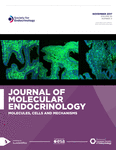Role of transcription factors in the transdifferentiation of pancreatic islet cells
- 1Department of Neurobiology, Physiology and Behavior, College of Biological Sciences
2Department of Physiology and Membrane Biology, School of Medicine, University of California, 193 Briggs Hall, One Shields Avenue, Davis, California 95616, USA
- Correspondence should be addressed to M O Huising; Email: mhuising{at}ucdavis.edu
Abstract
The α and β cells act in concert to maintain blood glucose. The α cells release glucagon in response to low levels of glucose to stimulate glycogenolysis in the liver. In contrast, β cells release insulin in response to elevated levels of glucose to stimulate peripheral glucose disposal. Despite these opposing roles in glucose homeostasis, α and β cells are derived from a common progenitor and share many proteins important for glucose sensing and hormone secretion. Results from recent work have underlined these similarities between the two cell types by revealing that β-to-α as well as α-to-β transdifferentiation can take place under certain experimental circumstances. These exciting findings highlight unexpected plasticity of adult islets and offer hope of novel therapeutic paths to replenish β cells in diabetes. In this review, we focus on the transcription factor networks that establish and maintain pancreatic endocrine cell identity and how they may be perturbed to facilitate transdifferentiation.
- Revision received 29 January 2015
- Accepted 10 February 2015
- © 2015 Society for Endocrinology











